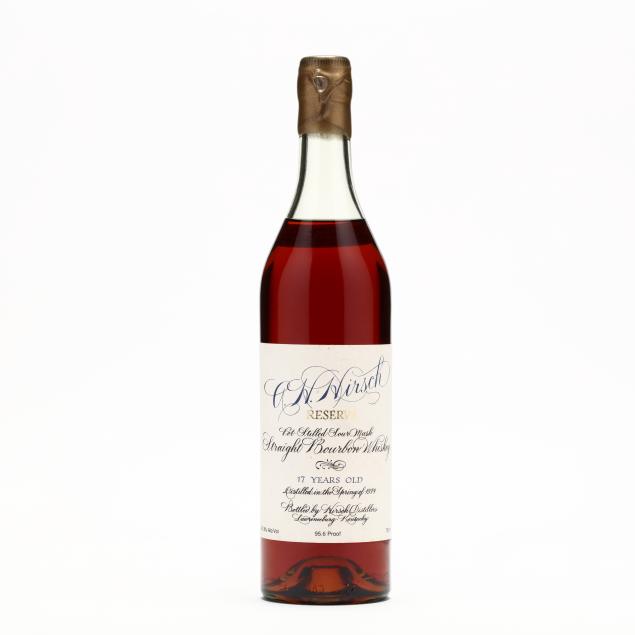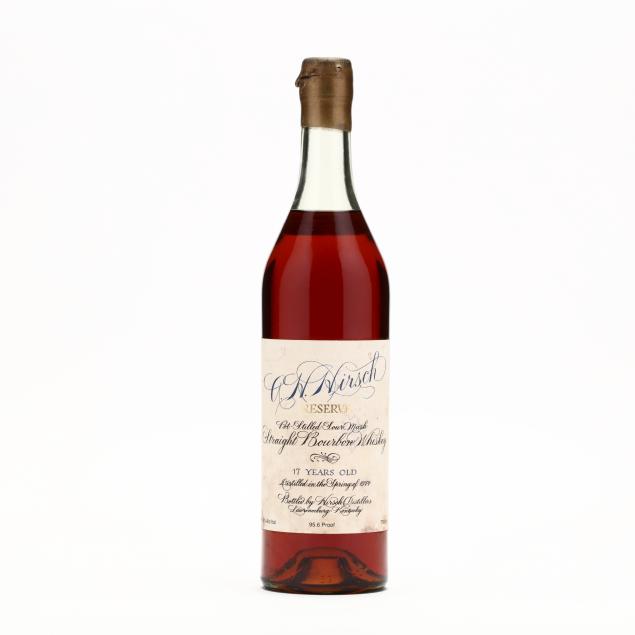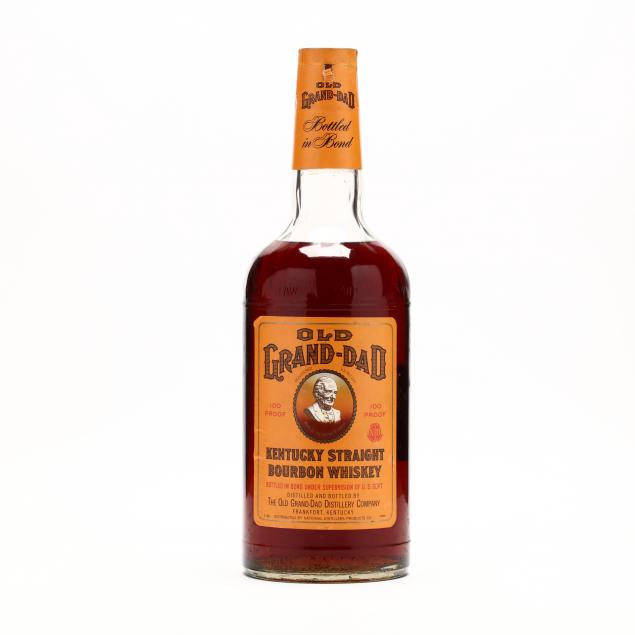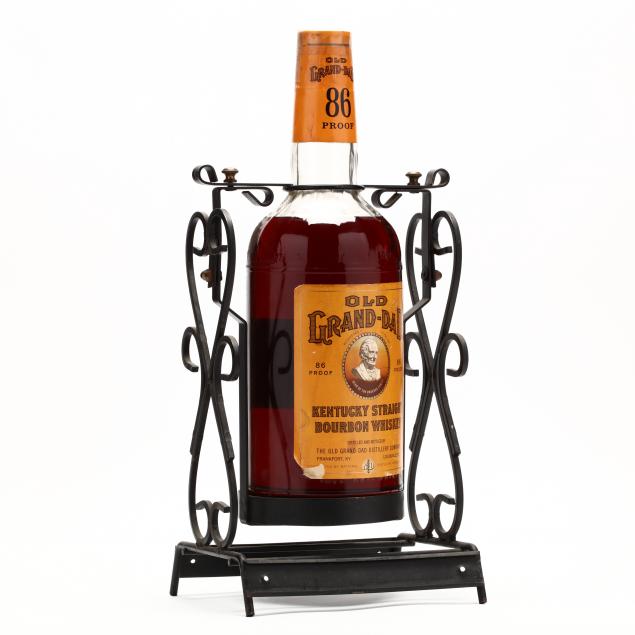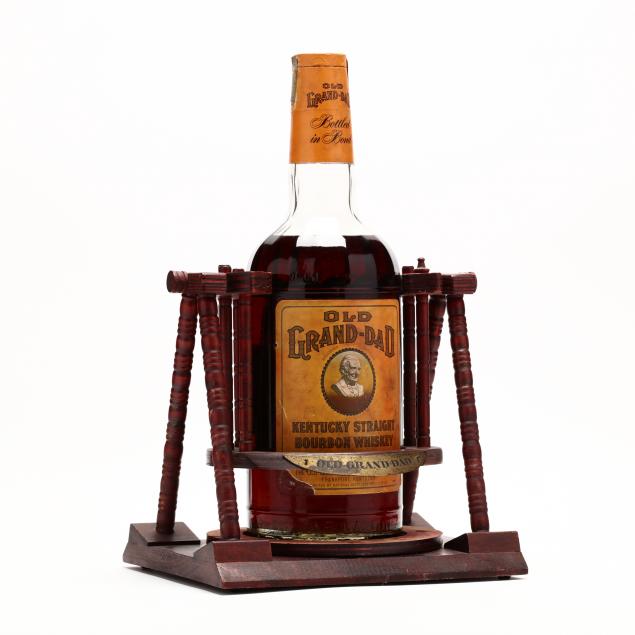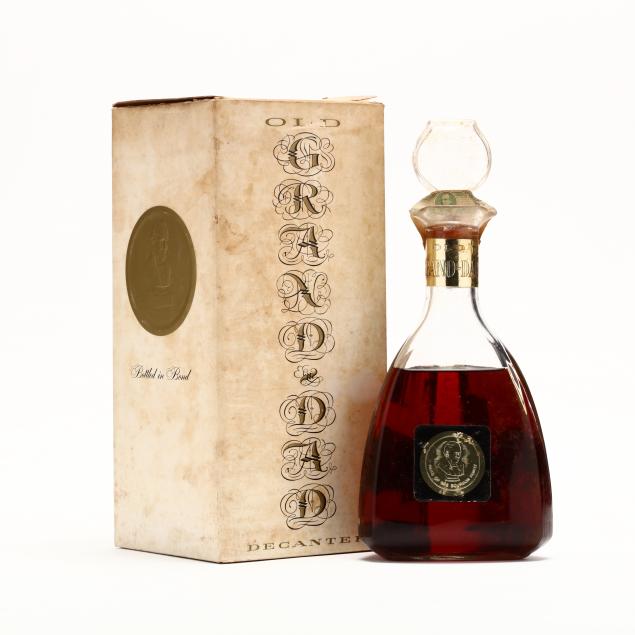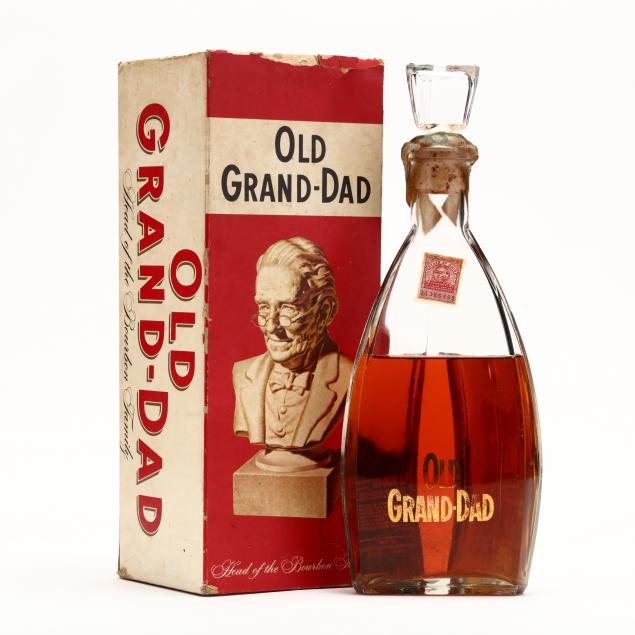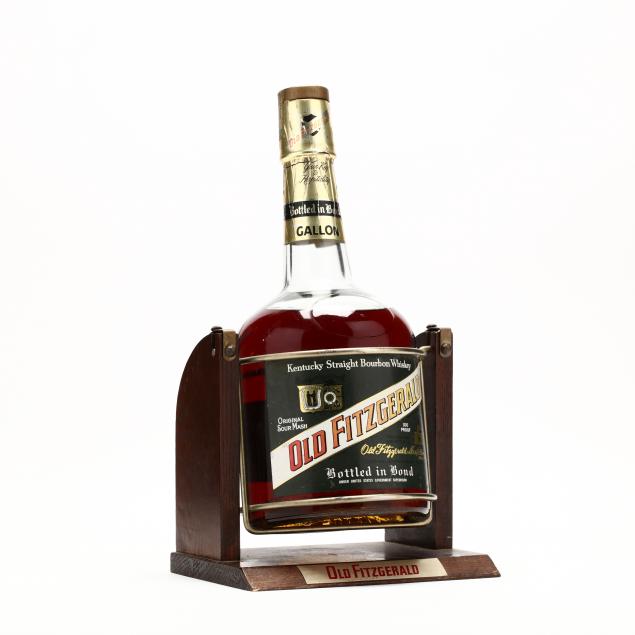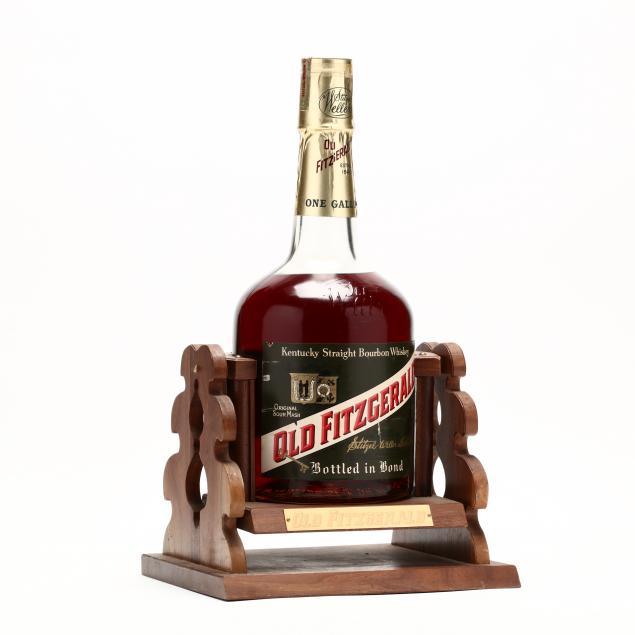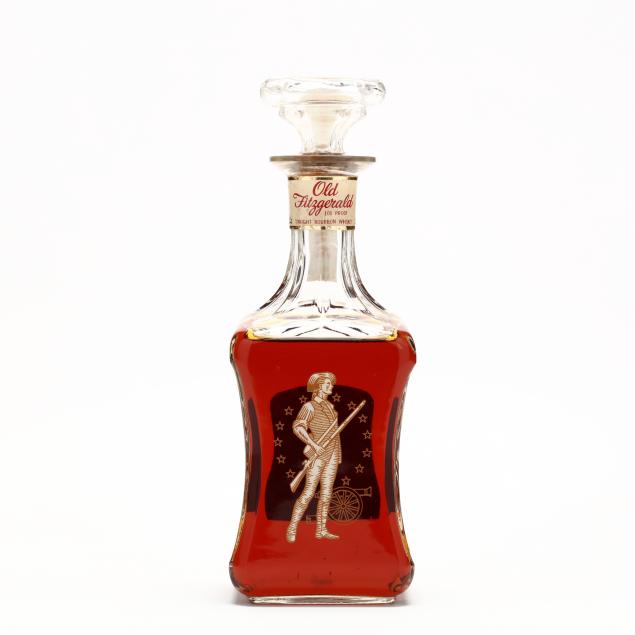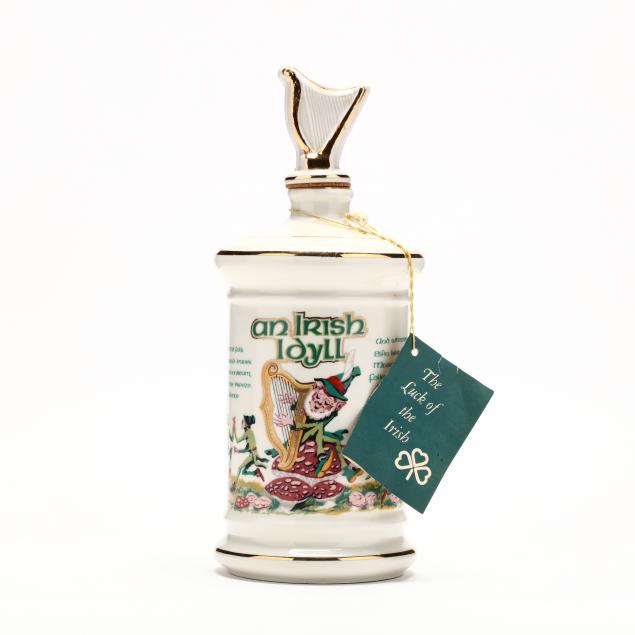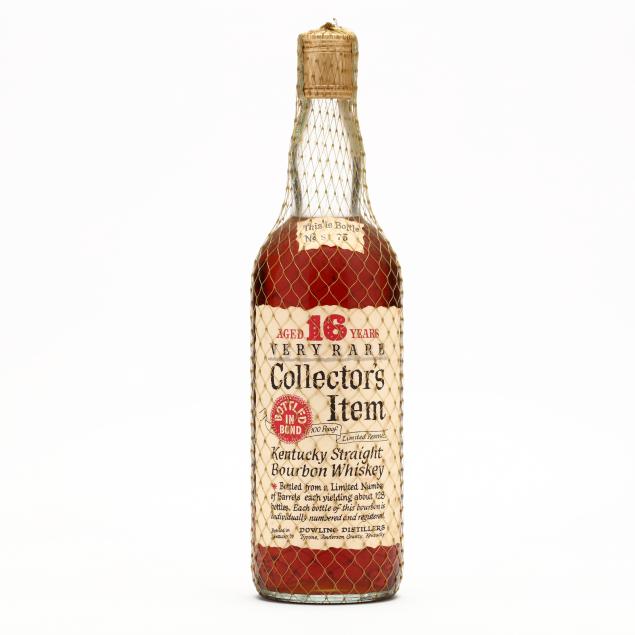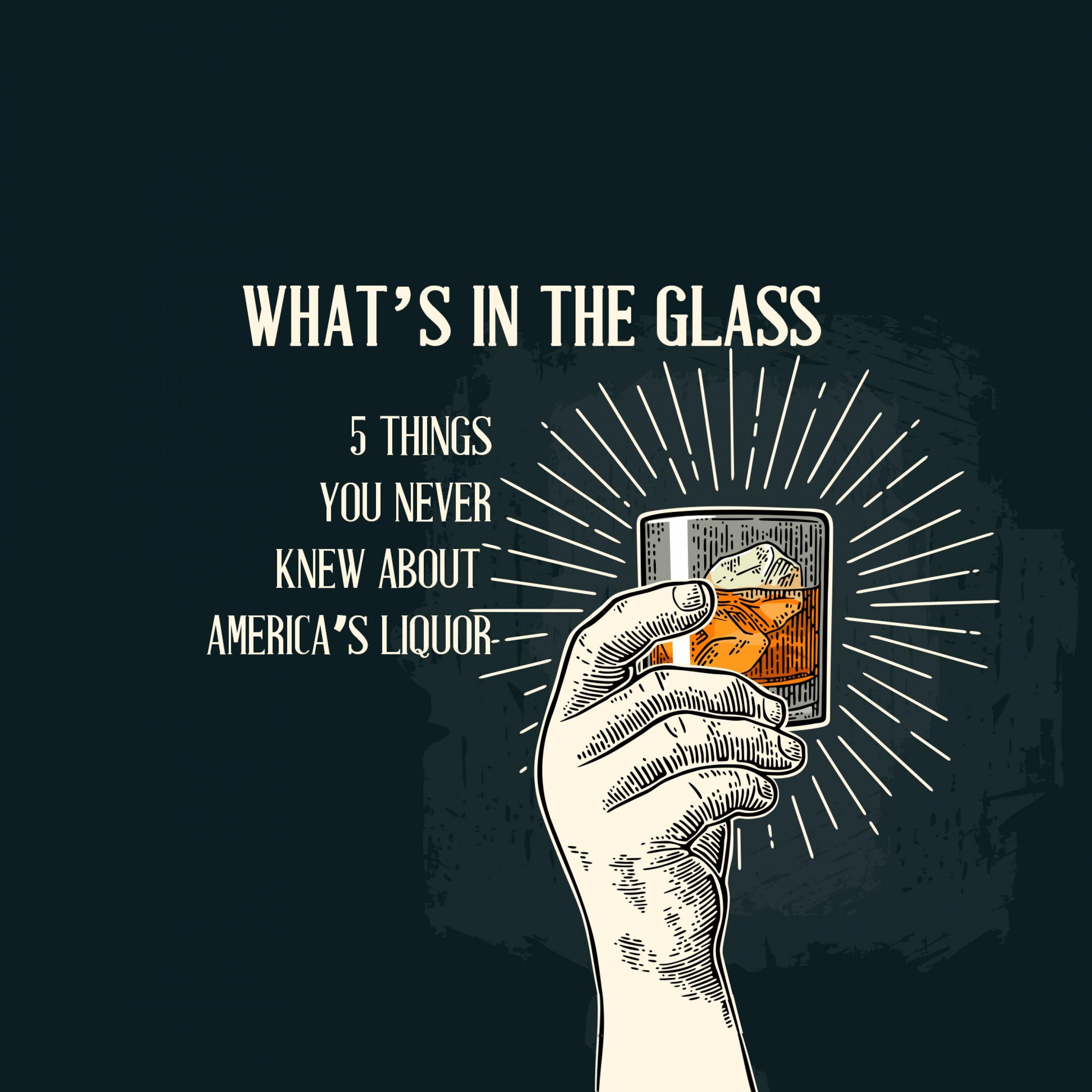
Seersucker suits, sweet tea, courtly manners, crushing humidity, and bourbon: these are the things of which the American South's reputation are made. But how did it get that way? There's a story behind every tradition. Our current auction of Fine Wine & Rare Spirits includes some of the most iconic names in bourbon, and some unusual and hard-to-find bottles from those names. A gallon of Old Grandad with ornate pouring stand, anyone? One can hardly suppress a "Bless your heart." And so, with visions of juleps, porches, and moss-laden oaks in our minds, we went to the heart of the lore, to find out the who-what-why of bourbon. Below, five facts you never knew about the brown liquor of the South.
About Those Big Bottles
They do look ceremonial, don't they? The size, the pouring contraption - surely these gallon bottles of the best bourbons of the day must be custom-suited to some rite of Southern tradition. Alas, all best guesses say they were likely more marketing gimmick than anything else. A bigger bottle simply stood out better on a bar or a store shelf. And, unlike wine, where bottling in large format is an advantage for aging, the large bottle doesn't hold any real benefit to the bourbon inside. But since it's been illegal to bottle spiritous liquor in bottles of this size since the late 1970's, the specimens that are left, like the four in our auction, are guaranteed to be vintage, from era of the mid-century bourbon boom when many of these distilleries were at their peak. And while these large bottles may not have been intended for any particular use when they were bottled, they would undeniably make a statement at a gathering now. For, say, pouring mint juleps at the ultimate Kentucky Derby party.....
They do look ceremonial, don't they? The size, the pouring contraption - surely these gallon bottles of the best bourbons of the day must be custom-suited to some rite of Southern tradition. Alas, all best guesses say they were likely more marketing gimmick than anything else. A bigger bottle simply stood out better on a bar or a store shelf. And, unlike wine, where bottling in large format is an advantage for aging, the large bottle doesn't hold any real benefit to the bourbon inside. But since it's been illegal to bottle spiritous liquor in bottles of this size since the late 1970's, the specimens that are left, like the four in our auction, are guaranteed to be vintage, from era of the mid-century bourbon boom when many of these distilleries were at their peak. And while these large bottles may not have been intended for any particular use when they were bottled, they would undeniably make a statement at a gathering now. For, say, pouring mint juleps at the ultimate Kentucky Derby party.....
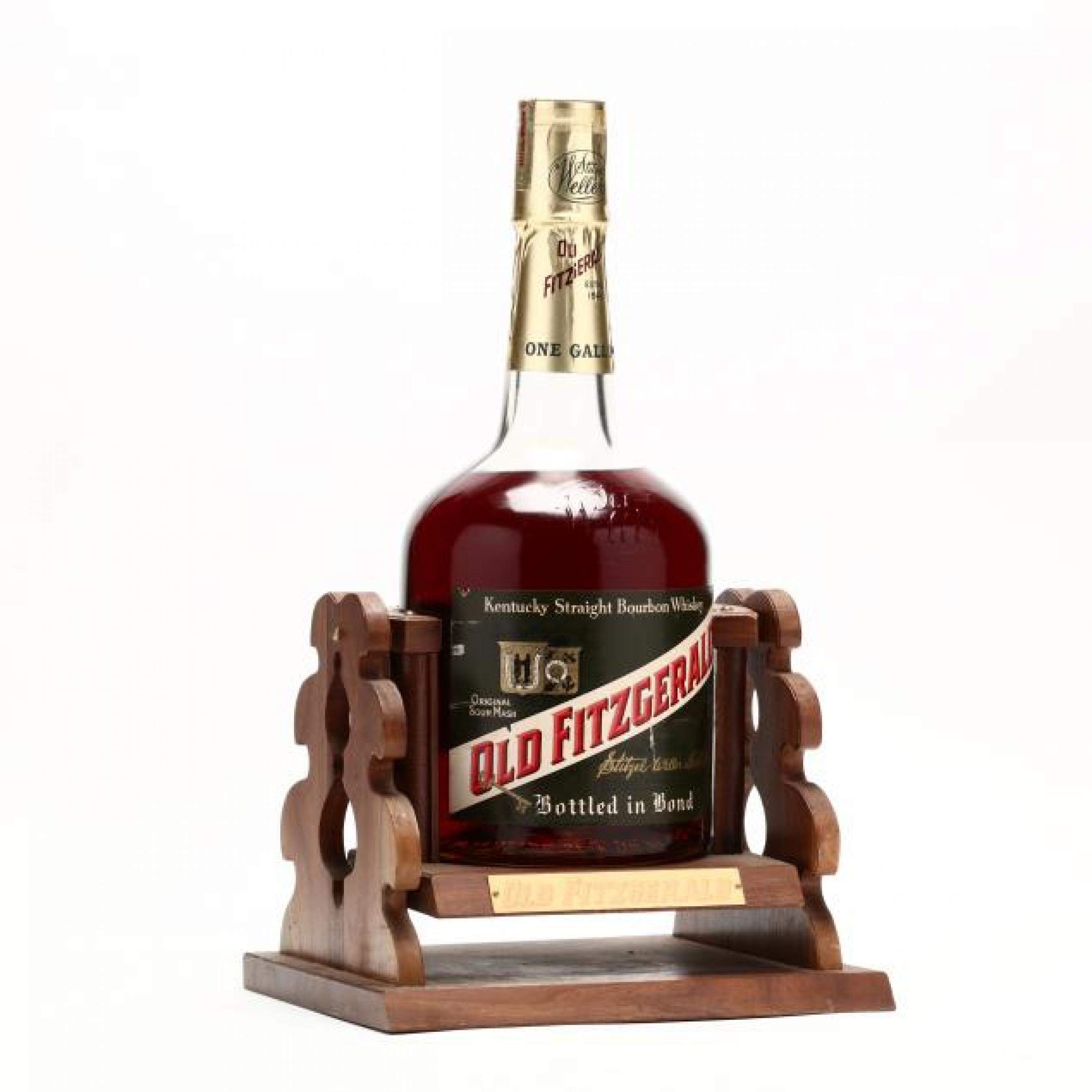
Gallon-sized Old Fitzgerald Kentucky Straight Bourbon Whiskey
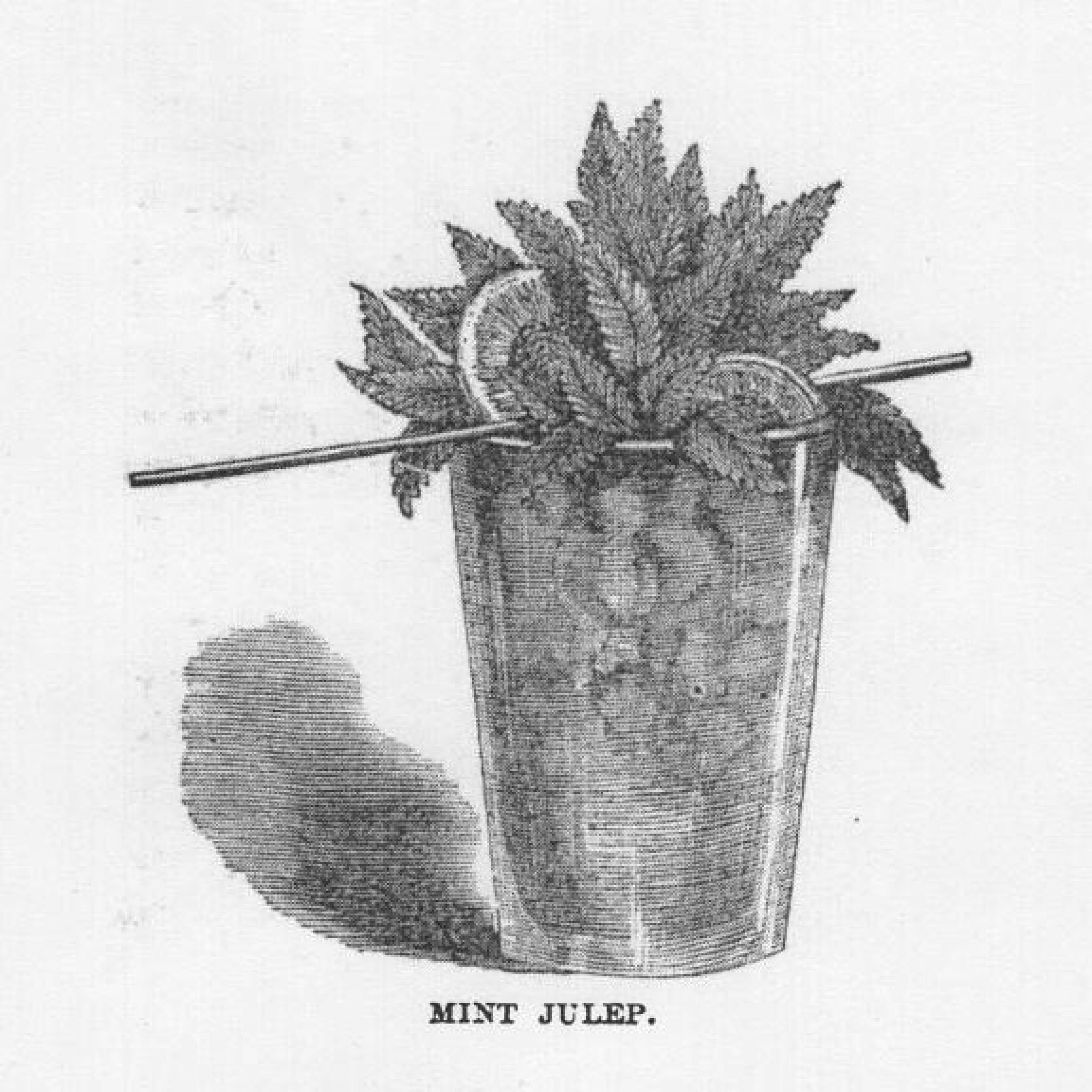
The Drink of the Derby
The mint julep became the official drink of the Kentucky Derby in 1938. But it didn't actually originate in Kentucky, and it didn't actually originally contain bourbon. The roots of the julep go centuries back to the Arab world, and a drink called gulab, made with rose water. In this country, the drink first surfaced in Virginia, was made with rum or brandy, and was drunk first thing in the morning to bring sleepy tipplers to their senses, likely with mixed results.
The mint julep became the official drink of the Kentucky Derby in 1938. But it didn't actually originate in Kentucky, and it didn't actually originally contain bourbon. The roots of the julep go centuries back to the Arab world, and a drink called gulab, made with rose water. In this country, the drink first surfaced in Virginia, was made with rum or brandy, and was drunk first thing in the morning to bring sleepy tipplers to their senses, likely with mixed results.
As it made its way to Kentucky, of course, the rum in the mint julep was replaced with Kentucky bourbon. Kentucky senator Henry Clay is said to have introduced the julep to the political crowd in Washington D.C., and Theodore Roosevelt bribed his cabinet to play tennis with him by promising rounds of mint juleps afterwards. Calvin Coolidge, however, who was an advocate of temperance, fed Roosevelt's patch of mint at the White House to his chickens.
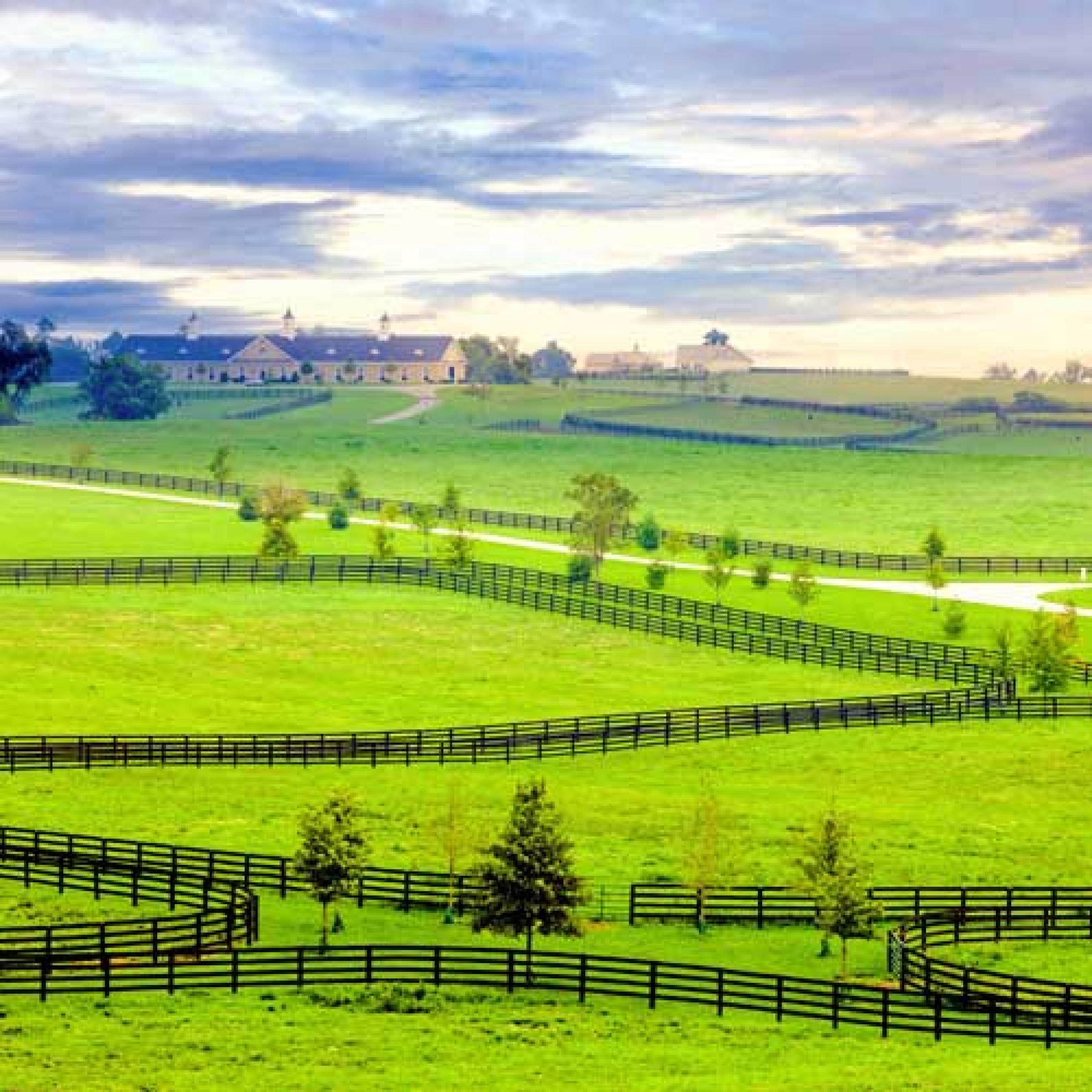
The Name
In the Northeast quandrant of Kentucky lies a patch of rolling hills and horse farms that has had roughly the same population for the last two hundred years. Welcome to Bourbon County. This is definitely the atmospheric home of the famous liquor, and indeed until Prohibition was home to scores of distilleries. But, counter to popular belief, the county is not likely the source of the name of the alcohol. Instead, bourbon-the-drink owes it's name to Bourbon St. in New Orleans, which was the final destination for much of Kentucky's spirits in the 19th century. French traders who landed in Kentucky recognized that the alcohol being made in Kentucky would sell better down the Ohio River in New Orleans if it was aged in charred oak barrels to give it the color of cognac, which was preferred by Southern city elites. And so we have "that whiskey they serve on Bourbon St.", or as we now know it, bourbon.
In the Northeast quandrant of Kentucky lies a patch of rolling hills and horse farms that has had roughly the same population for the last two hundred years. Welcome to Bourbon County. This is definitely the atmospheric home of the famous liquor, and indeed until Prohibition was home to scores of distilleries. But, counter to popular belief, the county is not likely the source of the name of the alcohol. Instead, bourbon-the-drink owes it's name to Bourbon St. in New Orleans, which was the final destination for much of Kentucky's spirits in the 19th century. French traders who landed in Kentucky recognized that the alcohol being made in Kentucky would sell better down the Ohio River in New Orleans if it was aged in charred oak barrels to give it the color of cognac, which was preferred by Southern city elites. And so we have "that whiskey they serve on Bourbon St.", or as we now know it, bourbon.
Ah Yes, The Barrels
Wouldn't it be nice if that story about the barrel char being for color's sake was the only, definitive one? Of course, history is never that cut, dried and coopered. Whiskey historians like Mike Veach do espouse the coloring version of why bourbon barrels are charred, but there are others. Some claim the char was a byproduct of barrel-making - the staves needed to be charred to make them more pliable. Other versions make char the happy accident of a distillery fire (though it's hard to see how the barrels in this instance would have been charred on the inside). One thing is certain: in order for an American whiskey to qualify as bourbon, it must be aged in new charred oak barrels. Bourbon barrels can only be used once in American production, but they are often then sold to European and Japanese producers of scotch, cognac, and whiskey to infuse a lighter oak and char character to those products.
Wouldn't it be nice if that story about the barrel char being for color's sake was the only, definitive one? Of course, history is never that cut, dried and coopered. Whiskey historians like Mike Veach do espouse the coloring version of why bourbon barrels are charred, but there are others. Some claim the char was a byproduct of barrel-making - the staves needed to be charred to make them more pliable. Other versions make char the happy accident of a distillery fire (though it's hard to see how the barrels in this instance would have been charred on the inside). One thing is certain: in order for an American whiskey to qualify as bourbon, it must be aged in new charred oak barrels. Bourbon barrels can only be used once in American production, but they are often then sold to European and Japanese producers of scotch, cognac, and whiskey to infuse a lighter oak and char character to those products.
Burying The Bottle
There is one Southern tradition that ties together many of the others - seersucker suits, bourbon, even the humidity. Betrothed couples in the South are meant to visit the site of their planned wedding ceremony exactly one month in advance, dig a hole in the ground, and insert an upside-down bottle of bourbon. Once done, this is supposed to guarantee good weather on their wedding day. After the ceremony, they dig up the bottle and share it around with the wedding party. This runs counter to the saying that rain on your wedding day guarantees a happy marriage, but then the South has always played by its own rules.
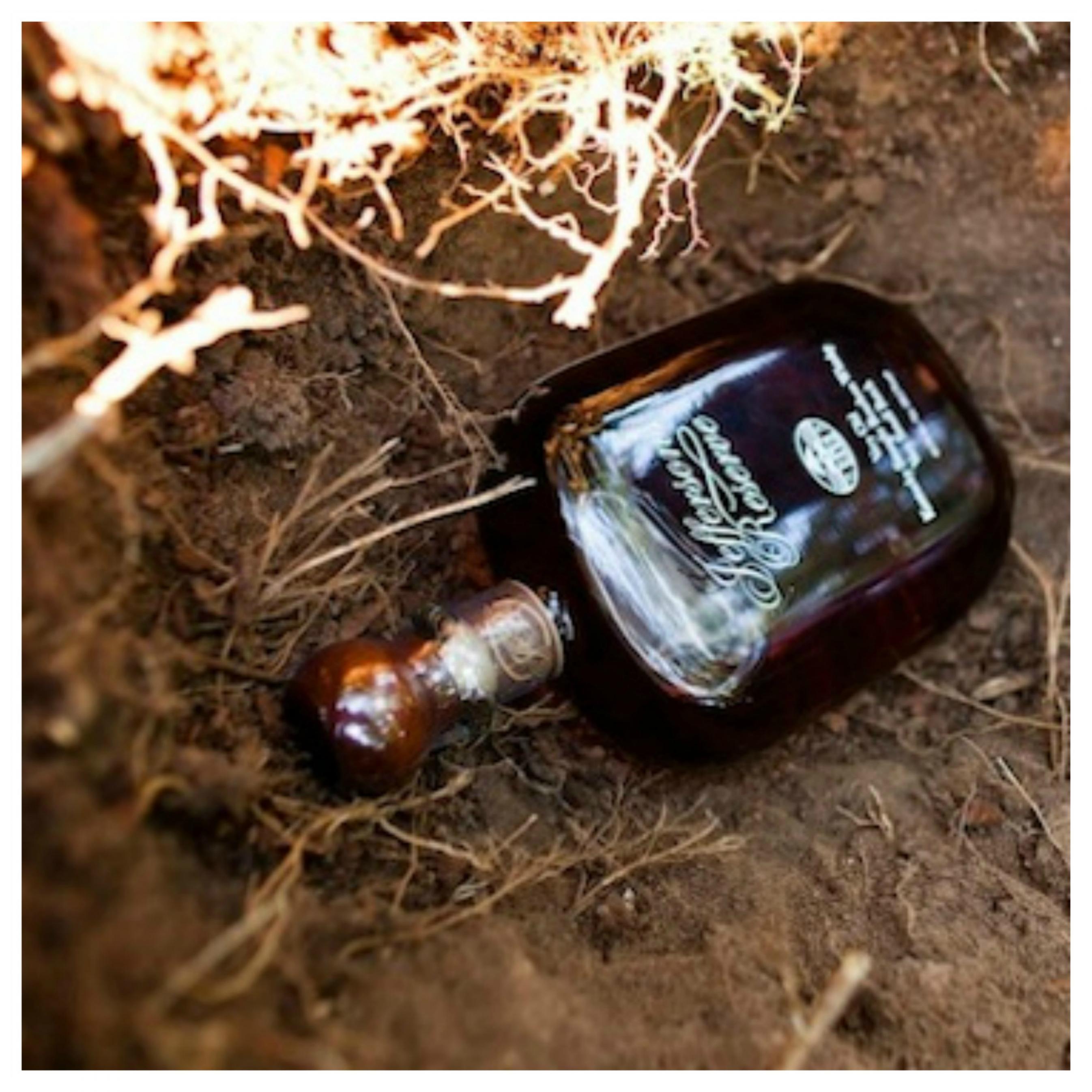
Fine Wine & Rare Spirits
Thursday, April 9th
1:00pm (EDT)
Featured lots of bourbon in the Fine Wine & Rare Spirits Auction are below.
Thursday, April 9th
1:00pm (EDT)
Featured lots of bourbon in the Fine Wine & Rare Spirits Auction are below.


